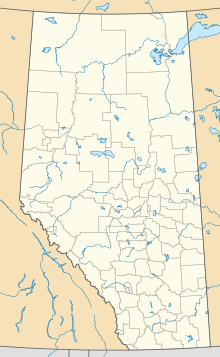
The Canadian Armed Forces are the unified military forces of Canada, including land, sea, and air commands referred to as the Canadian Army, Royal Canadian Navy, and the Royal Canadian Air Force. The CAF also operates several other commands, including the Canadian Forces Intelligence Command, the Canadian Joint Operations Command, and the Canadian Special Operations Forces Command.

The Canadian Army is the command responsible for the operational readiness of the conventional ground forces of the Canadian Armed Forces. It maintains regular forces units at bases across Canada, and is also responsible for the Army Reserve, the largest component of the Primary Reserve. The Army is headed by the Commander of the Canadian Army and Chief of the Army Staff, who is subordinate to the Chief of the Defence Staff. The Army is also supported by 3,000 civilian employees from the public service.

Land Force Western Area (LFWA) was a formation of the Canadian Army responsible for operations in the Canadian provinces of Manitoba, Saskatchewan, Alberta and British Columbia. LFWA was headquartered at CFB Edmonton. The command was formed in 1991. In 2013 it was announced that LFWA would be renamed 3rd Canadian Division. This change took place in the summer of 2014.

The 3rd Canadian Division is a formation of the Canadian Army responsible for the command and mobilization of all army units in the provinces of Manitoba, Saskatchewan, Alberta and British Columbia, as well as all units extending westwards from the city of Thunder Bay.

A Canadian Forces base or CFB is a military installation of the Canadian Armed Forces. For a facility to qualify as a Canadian Forces base, it must station one or more major units.
3rd Canadian Division Support Base Detachment Wainwright, commonly referred to as Canadian Forces Base Wainwright or CFB Wainwright, is a Canadian Forces Base located in Denwood, Alberta, adjacent to the town of Wainwright.

Canadian Forces Base Cold Lake, abbreviated as CFB Cold Lake, is a Canadian Forces Base in the City of Cold Lake, Alberta.

Canadian Forces Base Baden–Soellingen or CFB Baden–Soellingen, formerly known as RCAF Station Baden–Soellingen (Baden), was a Canadian Forces base located near the farming community of Söllingen, part of the municipality of Rheinmünster in the West German state of Baden-Württemberg. It is now a commercial area called Baden Airpark, which also includes the regional airport Flughafen Karlsruhe/Baden-Baden.
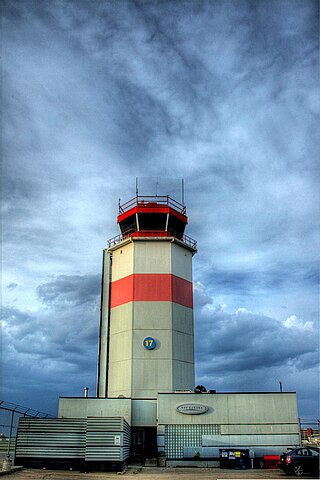
Edmonton City Centre Airport (ECCA), also called Blatchford Field as well as Edmonton Municipal Airport, was an airport within the city of Edmonton, in Alberta, Canada.

Canadian Forces Base Moose Jaw, also known as 15 Wing Moose Jaw, is a Canadian Forces base located 4 nautical miles south of Moose Jaw, Saskatchewan. It is operated as an air force base by the Royal Canadian Air Force (RCAF) and is home to RCAF Pilot training and 431 Squadron, the Snowbirds, which is the RCAF's air demonstration squadron.

408 Tactical Helicopter Squadron is a unit of 1 Wing, Kingston. It is co-located with 1 Canadian Mechanized Brigade Group at Canadian Forces Base (CFB) Edmonton.
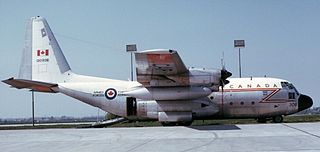
Canadian Forces Base Lahr was a military operated commercial airport located in Lahr, Germany. It was operated primarily as a French air force base, and later as a Canadian army base, beginning in the late 1960s. The military base was closed in 1994 and converted to civilian use. It is now known as the Flughafen Lahr.
CFB Griesbach was an army base that was located in the north end of Edmonton, Alberta, Canada. The site was named after Major-General William Antrobus Griesbach (1878–1945), a veteran of the Second Boer War, the First World War and the Second World War. Griesbach was also an Edmonton alderman and mayor, and served as a Member of Parliament and a Senator.
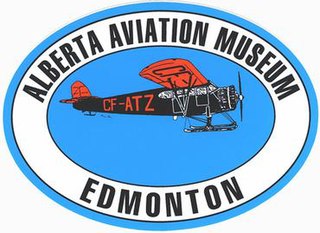
The Alberta Aviation Museum is an aviation museum located in Edmonton, Alberta, Canada. The museum is located on-site at the former Edmonton City Centre Airport on the southwest corner of the field.
In the Canadian Armed Forces, a Regular Force unit or person is part of the full-time military, as opposed to being part of the Primary Reserve which has more flexibility. There are many bases and wings across Canada, and factors like trade, career progression, and environment will affect where the person ends up. They receive more pay and benefits than members of the Primary Reserve and can be ordered into overseas deployments.

The Canadian Forces Health Services Group is a formation of the Canadian Forces within the Military Personnel Command. It includes personnel from both the Royal Canadian Medical Service and the Royal Canadian Dental Corps, fulfills all military health system functions from education and clinical services to research and public health, and is composed of health professionals from over 40 occupations and specialties in over 120 units and detachments across Canada and abroad.
Canadian Forces Europe was the Canadian Forces military formation in Europe during the Cold War. The CF assisted other NATO allies in watching the military activities of Warsaw Pact and the Soviet Union.
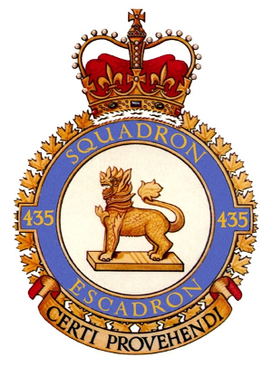
435 Transport and Rescue Squadron, nicknamed "Chinthe Squadron", is a Royal Canadian Air Force strategic transport, aerial refuelling and search and rescue unit based at Canadian Forces Base (CFB) Winnipeg in the province of Manitoba, Canada. The squadron flies four Lockheed CC-130H Hercules aircraft. In addition to being the only provider of tactical fighter air-to-air refuelling in Canada, the squadron is a provider of primary search and rescue response for the largest search and rescue region in Canada, controlled from CFB Trenton. The squadron keeps an aircraft on constant readiness to deploy, with airborne search and rescue technicians standing by to respond within 30 minutes of notification during weekdays and 2 hours at other times. The Trenton Search and Rescue Region, also covered by the 424 Transport and Rescue Squadron, extends from Quebec City to the Rocky Mountains, and from the Canada–United States border to the North Pole, covering most of Central, Western, and Northern Canada.

418 Search and Rescue Operational Training Squadron is a unit of the Royal Canadian Air Force, formed during World War II.
The following is a hierarchical outline for the Canadian Armed Forces at the end of the Cold War. It is intended to convey the connections and relationships between units and formations.


